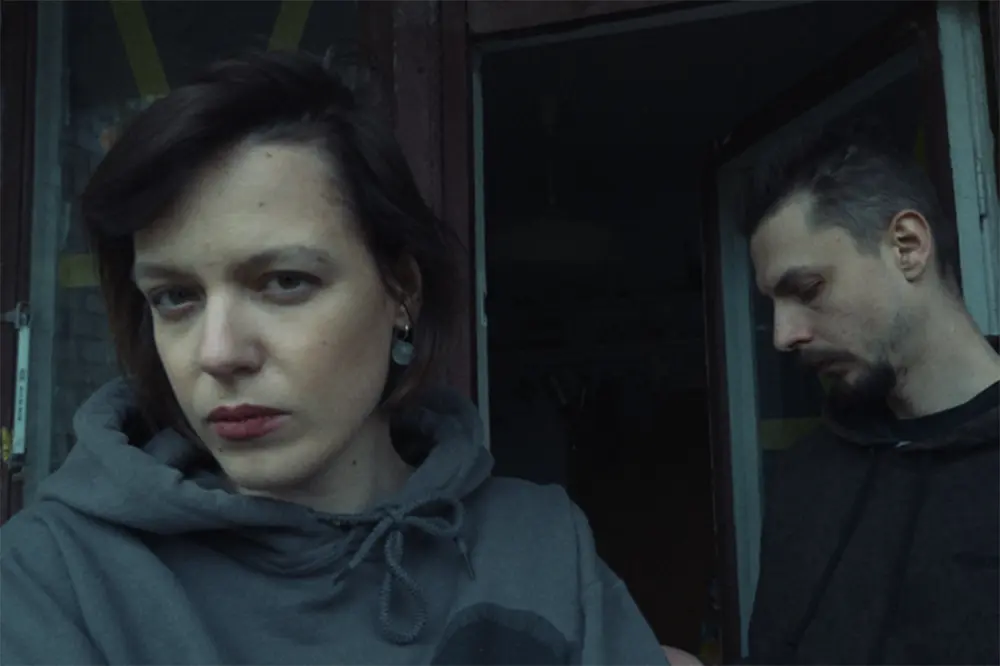Rule of Two Walls: An Artistic Refuge Amidst the Turmoil of War
The deafening roar of conflict—the relentless shelling, piercing air-raid alarms, and devastating explosions—has often drowned out the voices of those enduring Russian aggression in Ukraine. Yet, amidst this relentless chaos, the spirited resilience of Ukrainian artists echoes louder than ever. Ukrainian American director David Gutnik captures this defiance beautifully in his documentary Rule of Two Walls.
The heartbeat of Ukrainian art in times of war
Rule of Two Walls, shot in early 2022 just months into the invasion, offers an intimate look at how the war has altered the personal and professional lives of Ukraine’s most creative minds. Among the voices, you’ll hear thoughtful reflections from Lyana Mytsko, director of the Lviv Municipal Art Center, and rapper Stepan Burban, known by his stage name Palindrom. Burban’s journey from creating lyrics in Russian to boldly expressing himself in Ukrainian exemplifies the transformative power of art amid adversity.
Artists’ survival and expression
Gutnik does not lean on traditional talking-head interviews, which would starkly juxtapose the dynamic energy radiated by his subjects. Instead, he integrates a propulsive soundtrack, innovative camera movements, and strategic cuts to give each segment a fluid rhythm. Every frame either captures the artistic process or reflects on each individual’s daily life.
Rule of Two Walls is structured into three chapters, not defined by the people sharing their stories but by how Gutnik weaves their introspective thoughts together. This narrative technique allows multiple voices to intersect within each segment, offering a more cohesive and layered understanding of their experiences.
Confronting the horrors
Viewers should brace themselves for the graphic footage interspersed throughout the documentary. Charred bodies, decapitated corpses, and decomposed remains punctuate these personal narratives, ensuring the audience never forgets the grim context in which these artists persist. This shocking imagery serves as a visceral reminder of the ongoing atrocities perpetuated against their nation.
Cinematographer Volodymyr Ivanov’s candid account of his desensitization to violence and persistent insomnia brings an emotional weight to the film. His palpable sorrow and anger seep into the documentary, igniting a powerful response from viewers.
The “rule of two walls” metaphor
The film’s title refers to an immediate survival tactic during bombardments—finding refuge between the thickest walls available. This metaphorically represents the duality experienced by these artists as they navigate their roles as both victims and heroes amidst the devastation.
Making music, painting, and filming might appear trivial against the backdrop of such violent upheaval, but the existence and importance of documentaries like Rule of Two Walls showcase the clear empathy Western viewers hold for Ukraine. This contrast serves to highlight the selective narrative often surrounding global humanitarian crises, drawing implicit parallels to less supported situations like the ongoing strife in Palestine.
Personal and cultural reflections
In a poignant moment late in the film, Gutnik interjects his narrative, revealing the personal anguish that not one member of his family speaks Ukrainian, despite their heritage. This enforced assimilation policy from Soviet times aimed to stifle the unique identity of Ukraine’s culture, perpetuating the absurd notion that Ukrainian culture is non-existent—a claim starkly refuted by the vibrant expressions captured in this documentary.
The true essence of the film is crystallized in one haunting image—a theater in Mariupol, once a beacon of cultural significance, now reduced to rubble. While the physical structure may no longer stand, its memory evokes a collective strength that’s both inspiring and resilient, symbolizing a fight for artistic integrity and cultural survival.
More than just a documentary
Rule of Two Walls is not merely a film; it is a testament to the unyielding spirit of Ukraine’s creative community. It reminds us that even amid the bleakest circumstances, art remains a vital channel for resistance, hope, and expression. By bearing witness to their stories, viewers are offered a glimpse into the profound impact of war on cultural identity and the enduring power of the human spirit.
For more incredible stories and insights into the world of film, stay connected and share your thoughts on our social media channels. The conversation about the role of art in times of crisis is as essential as ever.

 Italian
Italian







